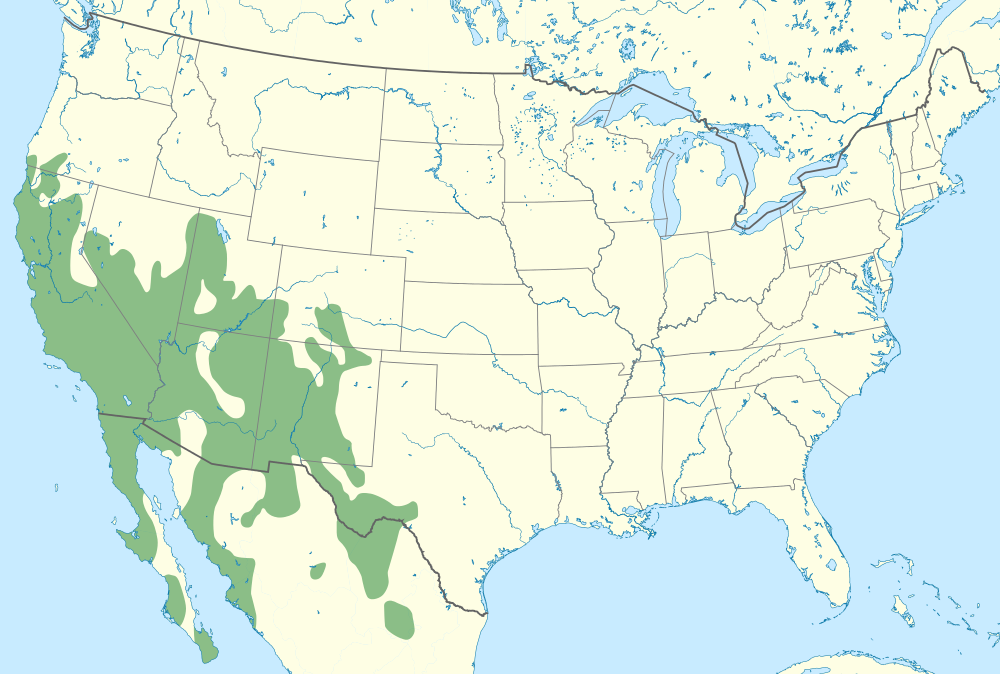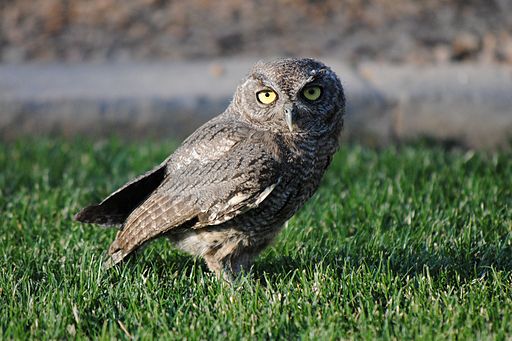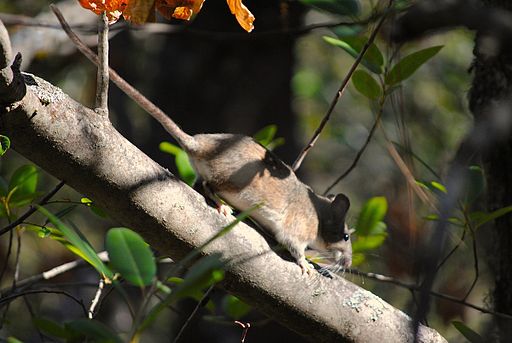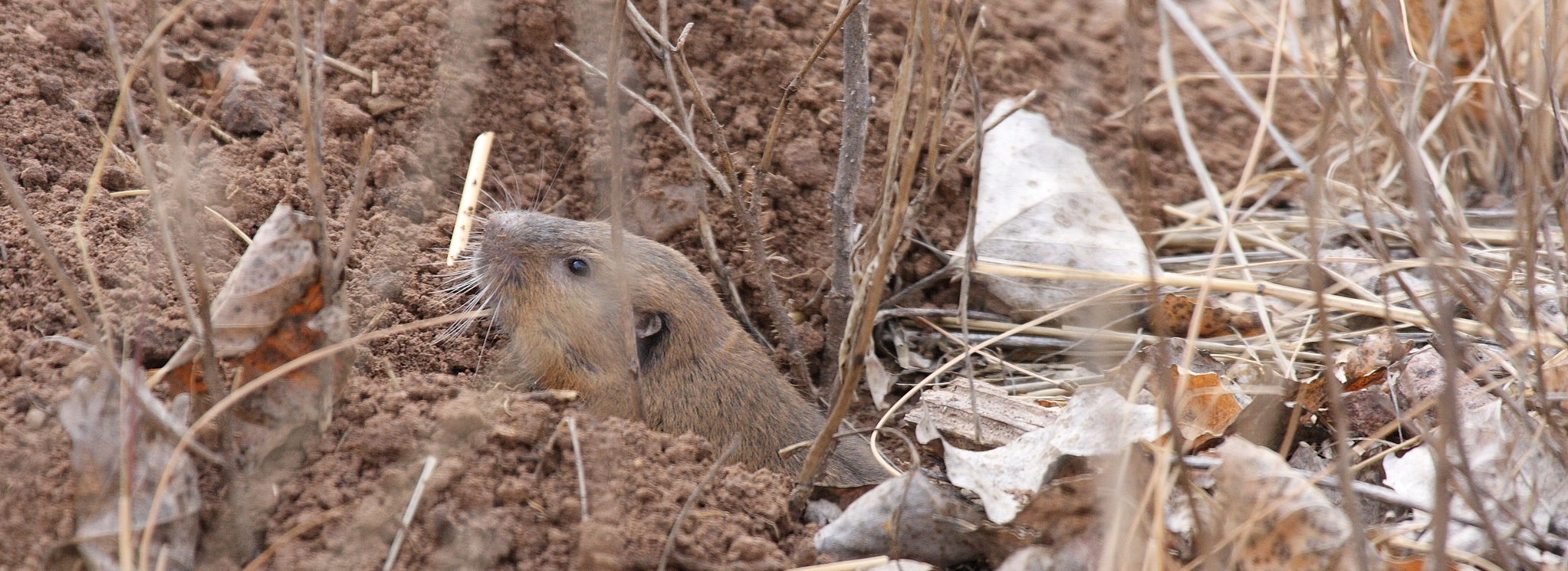Habitat
Primarily found in the American Southwest and the Baja,
Chihuahua, Coahuila, Nuevo Leon, Sinaloa, and Sonora regions of
Mexico (Jones and Baxter 2004), this mammal prefers to make its
home in the plains (Daly and Patton 1990). However, they have
also been found in a variety of other habitats, such as
woodlands, shrublands, and agricultural fields (Jones and Baxter
2004). In fact, the only places they do not live either have too
much water, such as near rivers, or do not have enough water,
like desserts or rocky terrains (Jones and Baxter 2004). These
little guys have even been found at elevations of up to 14,000ft
(Jones and Baxter 2004)! Due to this huge distribution, it is
hard to draw a definite line for habitation (Jones and Baxter
2004). Only certain subspecies have been observed in very
specific habitats (Jones and Baxter 2004).
Being mainly fossorial, they spend nearly 90% of their time
underground in the burrows they construct, which allow them to
retreat quickly into the ground when threatened (The Mammals of
Texas 2014). At the surface, these burrows look like a slightly
open hole in the ground with a “fan shaped” mound of dirt behind
them where excavation materials get deposited (Jones and Baxter
2004). However, underground they are much more intricate. These
burrows have been known to be highly complex, with multiple
chambers and corridors (The Mammals of Texas 2014). These
tunnels, ranging between 30m and 150m in length, are usually
just 6cm beneath the surface with birthing chambers much lower
at about 60cm (The Mammals of Texas 2014). This birthing chamber
is only added on during the mating season when two gophers will
share the tunnel (The Mammals of Texas 2014). Normally, the
tunnels are only inhabited by one gopher (The Mammals of Texas
2014). These one-gopher tunnels usually only consist of feeding
tunnels that run parallel to the surface and side-corridors to
store food (especially during the winter or dry conditions), and
others that serve are garbage reservoirs and bathrooms (The
Mammals of Texas 2014). They also consist of a nest (like their
bed) in a separate sleeping room that is usually off of the main
room or corridor 30cm to 70cm beneath the surface (The Mammals
of Texas 2014). This nest is made up of dried and shredded
vegetation that is rolled and compacted into a ball (The Mammals
of Texas 2014). Both males and females will make these special
sleeping quarters (The Mammals of Texas 2014). In winter months,
they will extend these tunnels above ground under the snow (The
Mammals of Texas 2014). This both extends their foraging range
and protects them from predators like the
Western Screech owls and
Red-Tailed hawks (The Mammals of Texas 2014).
In most areas, the pocket gophers live in grassy fields, which
can sometimes be taken over with plants like
Invasive Cheatgrass (Animal Diversity Web: Thomomys bottae
2014). They can share their habitats with animals like the
California Meadow Vole and
Dusty Footed Woodrat. However, these animals, especially the
pocket gophers are not always welcome. They have been blamed for
damaging many grasslands, which has turned them into a bit of an
ecological problem in some places (Animal Diversity Web:
Thomomys bottae 2014). They have also been noted for tearing up
and overgrazing farm fields, especially alfalfa fields and
pastures (Animal Diversity Web: Thomomys bottae 2014). On the
plus side, their holes have been praised (especially in wild
habitats) for churning up the earth, which both airates the soil
and brings in new nutrients (Animal Diversity Web: Thomomys
bottae 2014). Their holes also allow for snow runoff to soak
into the earth, which prevents erosion (Animal Diversity Web:
Thomomys bottae 2014).
.jpg)
This is a photo of
Invasive Cheatgrass

This is a map of Thomomy bottae's
distribution.

A photo of a
Western Screech owl.
.jpg)
A photo of a
Red-Tailed hawk.
.jpg)
A photo of a
California Meadow Vole.

A photo of a
Dusty Footed Woodrat.
